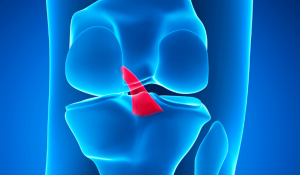An anterior cruciate ligament (ACL) tear is a significant knee injury that can disrupt your mobility and active lifestyle. Whether you’re an athlete or simply want to get back to everyday activities, understanding the path to recovery is essential.
Based on the expert guidance from Randall Cooper and Mick Hughes, ACL rehabilitation follows a carefully structured, phased approach. This helps ensure your knee heals properly while rebuilding strength, stability, and confidence.
 The ACL is a critical ligament inside your knee that stabilises it during twisting and pivoting movements. A tear typically happens during sudden changes in direction, awkward landings, or direct impact. This injury can lead to knee instability, swelling, and pain, often requiring surgery followed by rehabilitation.
The ACL is a critical ligament inside your knee that stabilises it during twisting and pivoting movements. A tear typically happens during sudden changes in direction, awkward landings, or direct impact. This injury can lead to knee instability, swelling, and pain, often requiring surgery followed by rehabilitation.
– A distinct “pop” sound or sensation at the time of injury
– Rapid swelling around the knee within hours
– Feeling of instability or your knee “giving way”
– Pain, especially when bearing weight
– Limited ability to fully straighten or bend the knee
If you notice these symptoms, prompt assessment is important for diagnosis and treatment planning.
This advice is based on the expert ACL rehabilitation protocol developed by Randall Cooper and Mick Hughes, leaders in sports physiotherapy and injury recovery. Their phased, criteria-driven approach is widely respected for guiding safe and effective recovery from ACL injuries.
The rehabilitation process after an ACL tear or reconstruction is divided into six phases, each with specific goals and activities. Progression through these phases is based on meeting clinical criteria, not fixed timelines, to ensure safe recovery.
Pre-Operative Phase: Injury Recovery & Readiness for Surgery
Before surgery, your focus is on reducing swelling, regaining full knee motion, and rebuilding at least 90% strength in the quadriceps and hamstrings compared to the other leg. This preparation enhances your chances of a successful surgery and a smoother rehabilitation process.
Phase 1: Recovery from Surgery
In the first 1-2 weeks after surgery, gentle exercises aim to restore full knee extension (straightening), control swelling, and reactivate the quadriceps muscles. Rest, ice, and compression are essential to support healing during this phase.
Phase 2: Strength and Neuromuscular Control
As healing progresses, you’ll begin strengthening exercises and balance training. This includes squats, lunges, bridging, and low-impact aerobic activities like cycling and swimming. The goal is to regain muscle strength and coordination to support knee stability.
Here, physiotherapist Simon guides a client through their ACL strengthening exercises. Focusing on correct form and control.
Phase 3: Running, Agility, and Landings
Once strength and control improve, rehab moves to more dynamic activities. Controlled running, agility drills, and jumping exercises are introduced gradually. Perfecting landing and pivoting techniques is vital to prevent re-injury.
Phase 4: Return to Sport
Returning to sport involves a highly individualised plan that includes sport-specific training and psychological readiness. You’ll only progress when your knee is strong, stable, pain-free, and you feel confident in your movements.
Phase 5: Injury Prevention
Even after returning to full activity, ongoing injury prevention is critical. This phase focuses on maintaining neuromuscular control through regular plyometric, balance, and strengthening exercises performed before training and games to minimise the risk of future ACL injuries.
ACL rehabilitation is a marathon, not a sprint. By following these structured phases and listening to your body, you set yourself up for the best chance at a full, strong recovery.
At Nordic Balance, our expert physiotherapists and sports therapists work closely with you through each phase, offering personalised guidance and evidence-based care to get you back to what you love, safely and confidently.
Find your nearest Nordic Balance. We have physiotherapy clinics in Battersea, Clapham, Wimbledon and St. James’s, London.
January 10th 2022
Are you training hard eating right but are not losing fat and feeling great as you think it should be Follow these five simple ways to strong boost weight loss strong and see improvements h Boost weight loss with increased Vitamin D h Boost weight loss by making sure your...
READ MOREJanuary 10th 2022
p For thousands of people it's peak time to slip on their trainers and hit the road We are all aware of the benefits of running We can increase cardiovascular fitness and enhance feelings of wellness and relaxation However training errors can also predispose a runner to injuries such as...
READ MOREJanuary 10th 2022
Recovering from pregnancy is an important process for a new mother's health and well-being Although recovering can be tiring especially in the first few weeks after giving birth it is possible to regain strength and energy through proper nutrition rest and by gradually returning to regular physical activity Taking the...
READ MORE